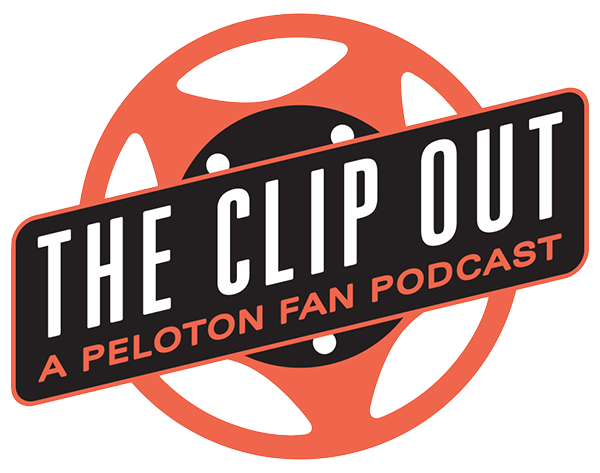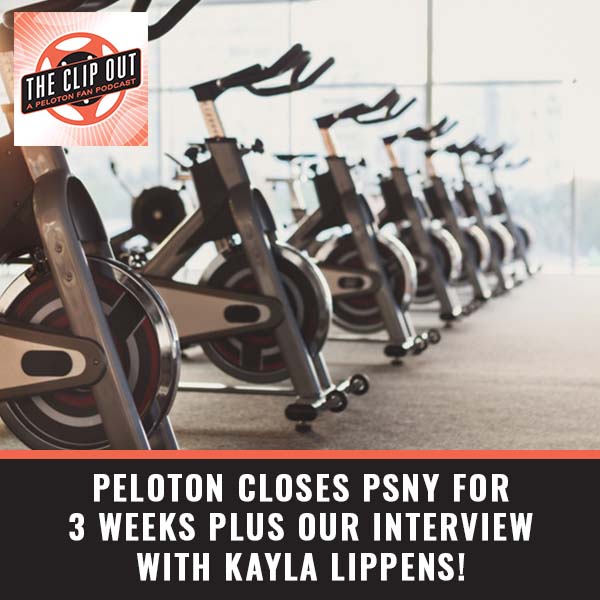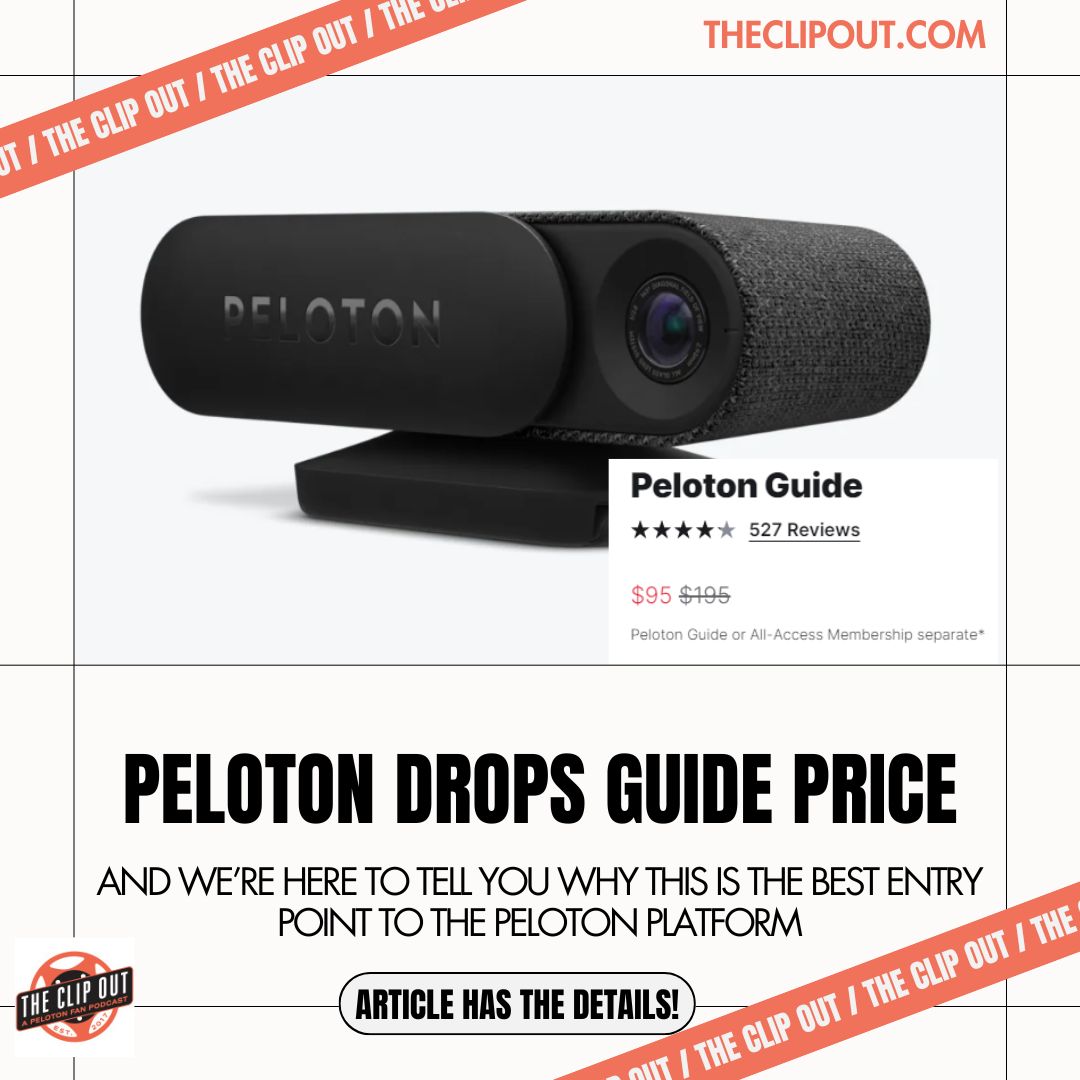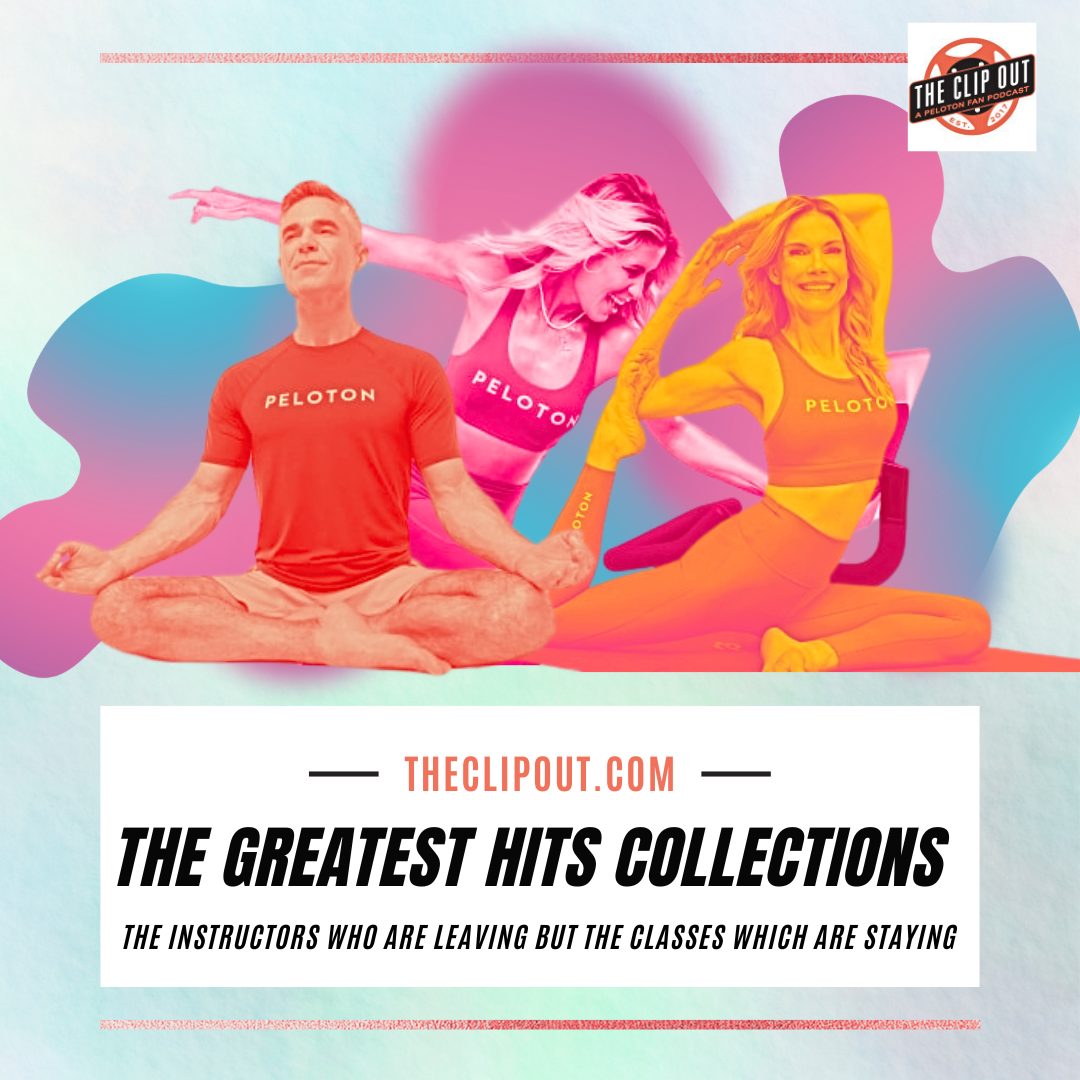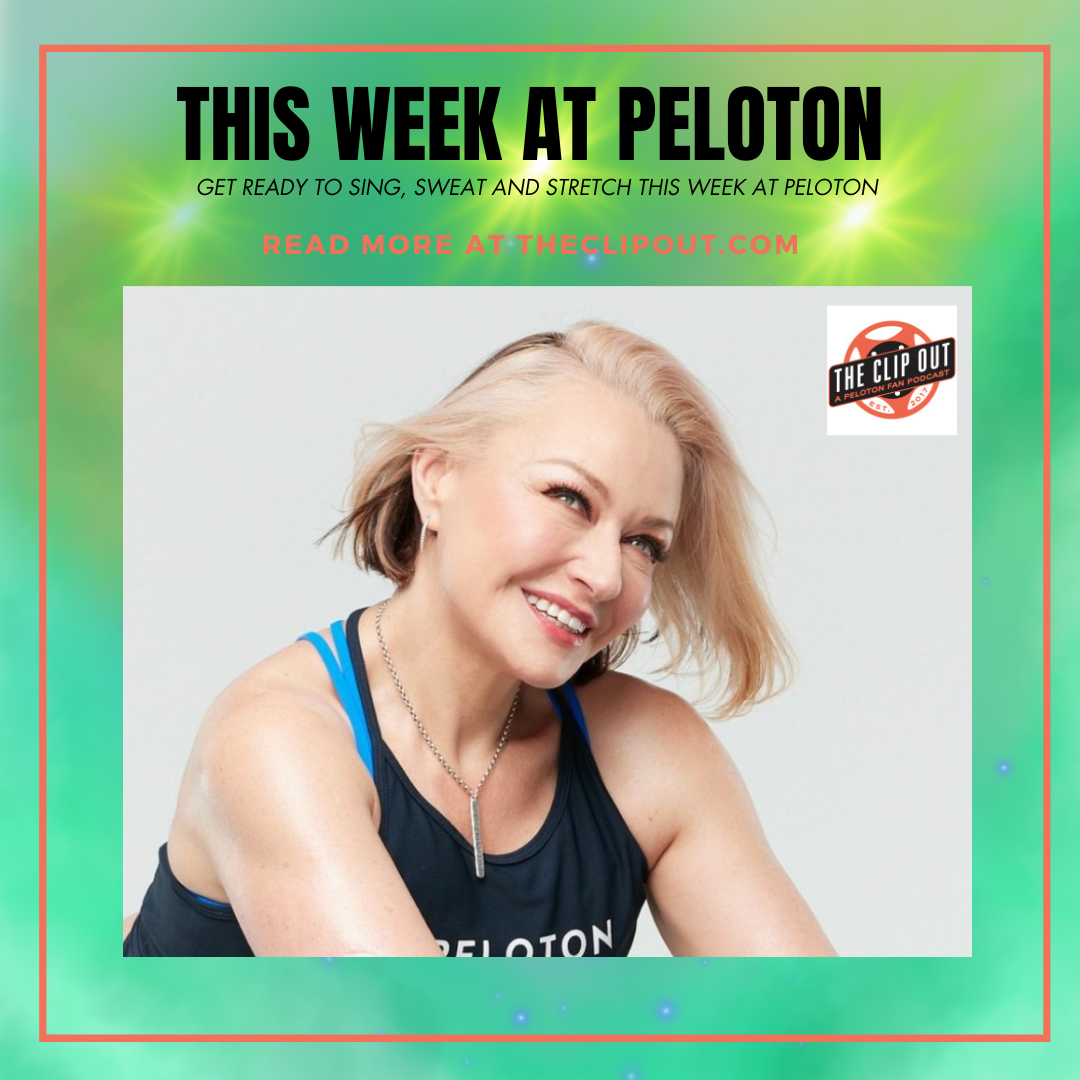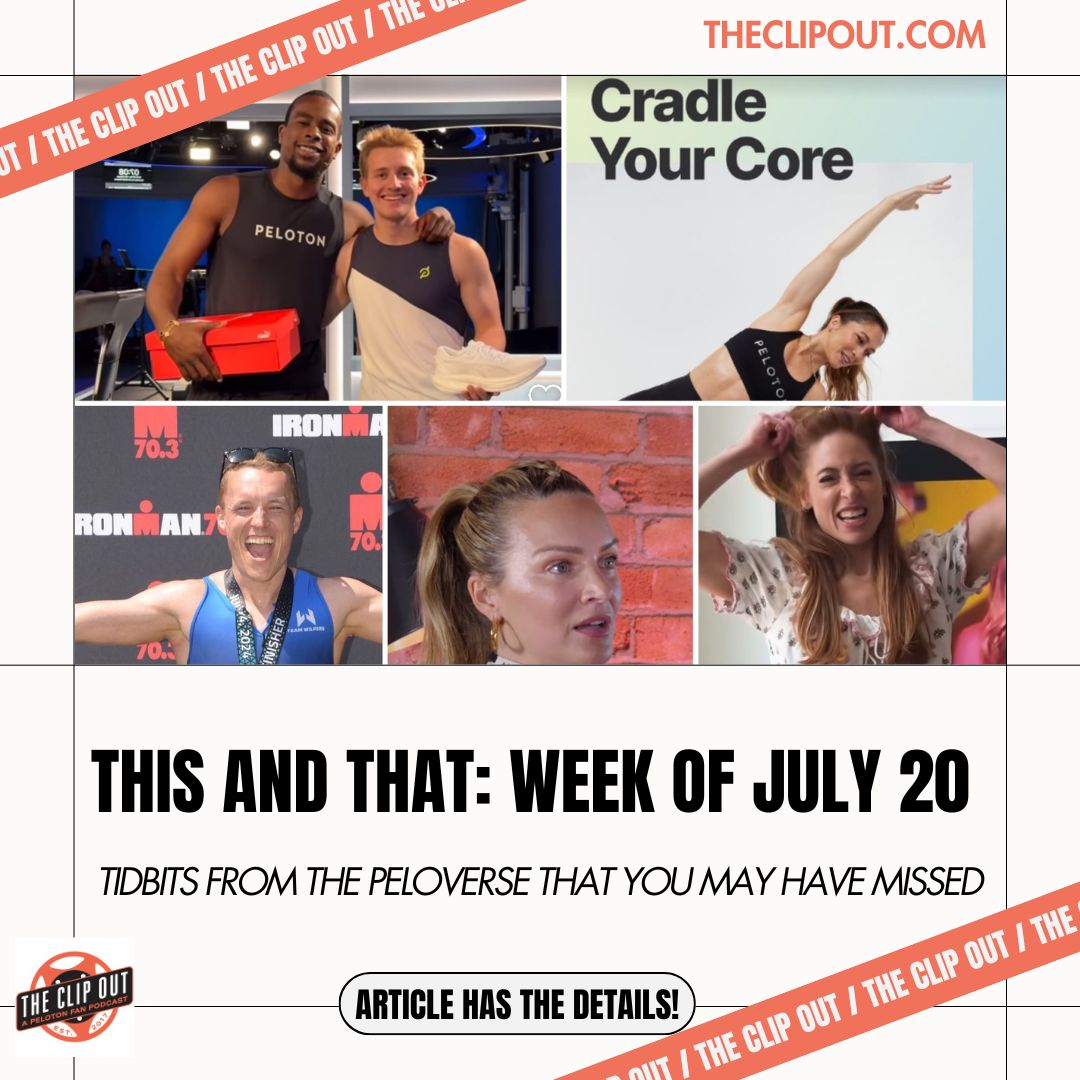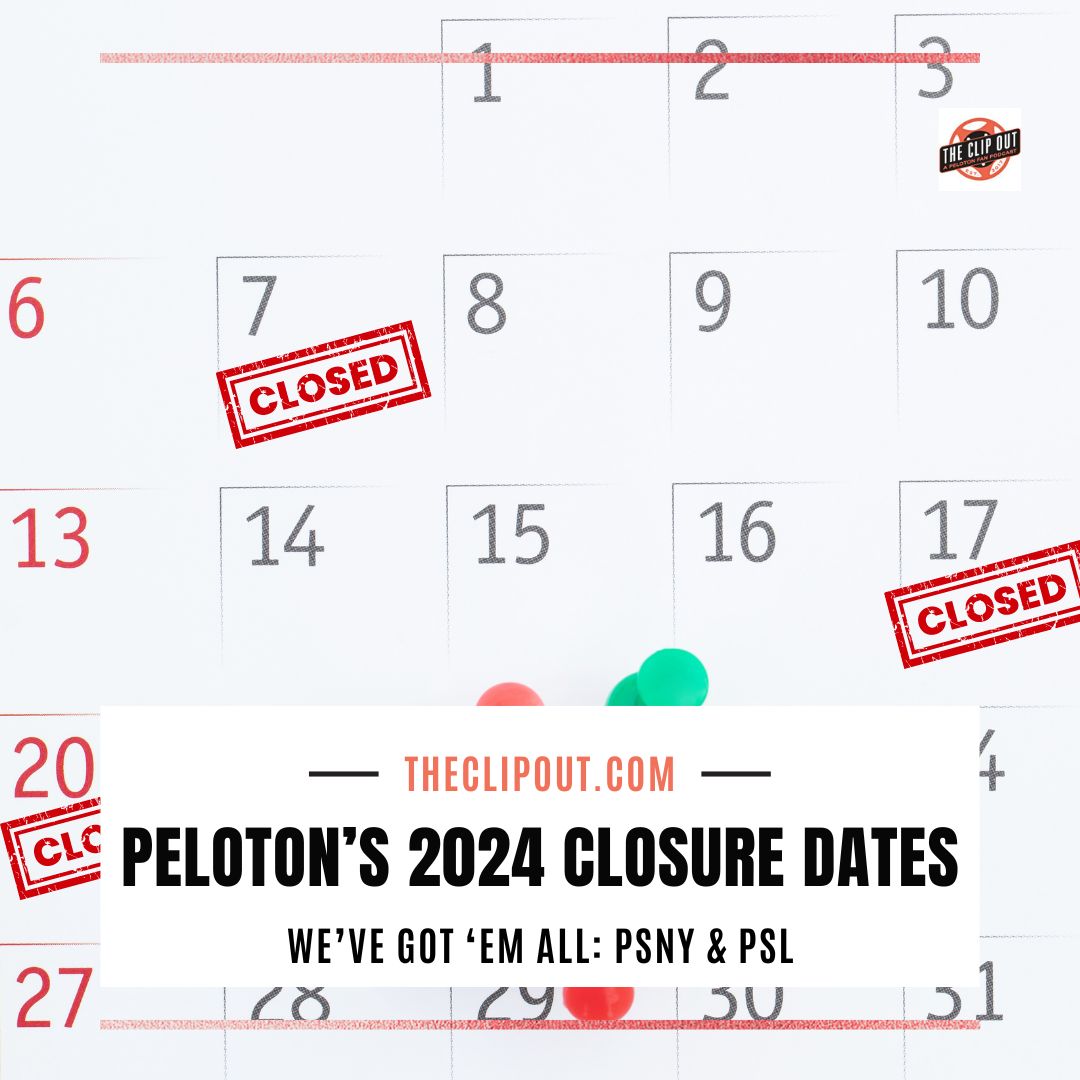Product Development At Tonal: Behind The Scenes
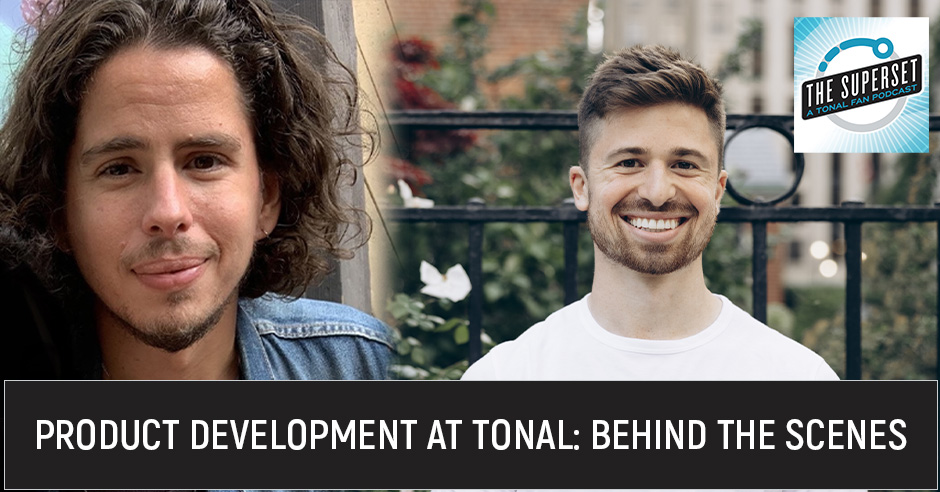
New content including:
- Epic Shoulder
- Full-Body Barbell
- Leg Day Essentials
- Quick Fit: Lats & Triceps
- Workouts Women Love
- Using Tonal to improve your pickleball game.
- Tips on using sharing your custom workouts.
All that plus our interview with Zach Lebovics & Dan Tuzzeo
—
Watch the episode here
Listen to the podcast here
Product Development At Tonal: Behind The Scenes
Welcome to episode 55.
We go straight into talking about our interview for this episode.
The interview was so fascinating.
We talked to Zach Lebovics and Dan Tuzzeo. They work on the development team. They take us all through what goes into the design of a program. It’s interesting. They go deep. It’s a lengthy conversation but I thought it was fascinating. If you want to know what thought process goes into the Tonal classes and programs that you take, you will find this to be a very enlightening discussion.
A lot of people ask a lot of questions like, “Why can’t I have this or that class? I want this and that.” Maybe having this understanding of all of the deep thought that is going into why things are being done, hopefully, will be helpful.
You also get information on how to talk directly to them if you have ideas because they want to hear them. They like to hear so much of what people have to say. They liked something I said during this interview.
Notes were taken.
They were writing things down. I know what it looks like when someone is pretending to write something down to appease me. I get placated frequently because I am a White man but no, they were serious. There was real writing going on there. What else pre-tell do we have in store for people?
There’s going to be new content that we’re going to talk about, new programs and workouts. We’ll break it out a little bit for everybody.
We know people are loving pickleball.
We’re going to talk about strength training.
It’s how to use your strength training to get better at pickleball. It’s a great way for you to strengthen your pickleball game. Before we get to all that shameless plugs, don’t forget we’re available on Apple Podcasts, Spotify, TuneIn, and iHeart. Wherever you find your show, you can find us. While you’re there, be sure to follow us so you never miss an episode. Maybe leave us a review. It’s always super helpful and greatly appreciated.
You can find us on social media at Facebook.com/SupersetPodcast. While you’re there, be sure to like the page and join the group. Don’t forget that you can watch all of these episodes on YouTube at our YouTube channel, YouTube.com/TheClipOut, the name of our other show but you can find all of our programming there. If you’re still on the fence about buying a Tonal, you can save money by tuning in to this show.
It’s $100 off when you put in code THECLIPOUT into the little buying code blank.
People come to Tonal for different reasons. People have different goals. Some people want to get lean and some people want to get jacked.
Like you. You want to get jacked.
I would like to have more muscles than I have. I know you would like me to have more muscles than I have and so far, you seem to like the ones that I’m getting. They have lots of great build-muscle programs for people who have that goal. They are scientifically proven, which is one of the things I love about Tonal. They’re doing the thinking so I don’t have to. It’s to help you maximize each of your sessions so you get to your goals faster. I don’t like working out.
You don’t like to think about what you need to do and have to design the perfect program for you. You just want to show up and do it. There are several new build muscle workouts that are coming out and they would fit into what you’re looking for, Tom. There’s a new one called Epic Shoulder and it is going to be coming from Coach Ackeem.
This is the perfect class for you if you are looking for building those bolder shoulders. This tends to be something that guys want to do but women need that shoulder work too because we need to keep our shoulders mobile and be able to lift above our bodies, which is not something I am typically good at. This is an important workout. You’re going to hit the muscles from your shoulders from all angles and work in a variety of rep ranges to stimulate hypertrophy and endurance gain. You’re going to be getting both. Your shoulders are going to hurt when you are done but you can use burnout mode to finish it up.
They have Full-Body Barbell. You will like this class, Tom. This one is quality time with the barbell and you’re going to build some serious strength. In the first block, you’re going to go through four different compound exercises using a descending rep scheme to keep the fatigue from slowing you down. That means that the reps get smaller. The second block is then going to transition to a higher volume set that’s going to use accessory muscles to help you dial in your proper movement patterns and then you’re going to feel all the barbell things by the end of the workout.
It’s funny. I tend to like the handles better than the barbell. I don’t know that all the moves are barbell but since it’s got barbell in the title, I’m assuming it probably is. I like not switching back and forth.
The instructors do a pretty good job of you don’t have to do a lot of moving back and forth so it doesn’t tend to bother me.
They do a good job of minimizing the amount that you have to move back and forth but you still have to do it sometimes. When it’s a barbell class and I know it’s all barbell, there’s a certain freedom of like, “I can set this up and be done.”
You also might like the Leg Day Essentials.
First off, nobody is going to like a Leg Day Essentials class.
Listen. I know they’re not going to like leg day but you might like the class because it’s simple. This is a classic lower-body workout. You’re going to push, pull, and step laterally using explosive movements and high reps to improve your strength, balance, and muscle mass. It’s effective but it doesn’t have a lot of extras that you don’t need. It’s just focused on what you need to get the leg day done.
That probably is good. It’s universal that people hate leg day. The fewer bells and whistles they pack into it, if you’re already like, “It’s leg day,” get in and get out.
Speaking of get in and get out, there’s also a new Quick Fit: Lats & Triceps. You need your rope and you’re going to use two moves. It’s very short. You’re going to do a single arm pull, which is going to increase your lat strength and range of motion for those overhead presses. You’re going to go into the tricep extensions for an accessory burnout. It’s very short and sweet. That is all of our muscle building.
This is gendered but this isn’t always the case. Sometimes women want to build muscles but we also have some workouts that we feel like women will gravitate toward.
I tend to think Tonal has a pretty good eye on these. They work with Stacy Sims and she’s very in tune with women but also there are several women instructors. They get what we want to do at home too. All of us at home are also giving Tonal all of our feedback. For a couple of new programs, one is called Shaped and Shredded Maximum Burn. This is super popular among female members that are looking to build lean muscle and burn fat.
You’re going to do heavy lifting with supersets and drop sets using the burnout mode and that’s going to drive muscle and development while also cardio conditioning is going to keep your heart rate high. These workouts are designed to get a metabolic response so your muscles will keep torching calories all day long. There’s a big focus on some glute and core work and that is what women love. This has got high volume sets, short rest periods, and a big dose of burnout.
You also have another program to try out, Heavy Lifts Hardcore. This is for beginners. This is going to be helping women who are going to be looking for gaining proficiency in those big compound movements to develop strength and muscular endurance. You’re also going to be getting core work in each session to build a strong and stable midsection. There are going to be upper-body, lower-body, and full-body focused days so you’re always going to get a little core in each of those days, which is perfect.
Before we segue into individual workouts, we should probably talk about a myth that a lot of women are afraid of “bulking up.” If they do one strength-based workout, they’re going to walk away looking like Arnold Schwarzenegger. Ladies, if it was that easy, you’d see a lot more men who look like Arnold Schwarzenegger. It’s not something you need to be afraid of. As I’ve heard you and Stacy Sims talk about, it gets harder as women approach menopause to build muscle, which makes it all the more important to do things like this.
Not only is it hard to build the muscle but you’re losing the muscle. Both things are happening. I have read over and over again from very reputable sources that if there is one thing you can do to prolong your life, it is to lift heavy weights. Please, women, do not be afraid to do that. I’m probably talking to women who already aren’t scared of that so share this with other people, other women who might be scared of it.
To your point, Tom, there are also three brand new individual workouts that are very popular among women. One is the Upper Body: Quick Fit. Women, like myself, do not always have upper body strength. This is a good class for somebody like me. I want to get in and get out and focus on my upper body. There’s also Quick Get. This is a sit session and a hit session. You’re going to get your heart pumping and work at a very high intensity and impact plyometrics. That means you’re going to go easy on your joints but also boost your metabolism and burn calories.
One more Quick Fit is Down To Deadlift. Those are important for your posterior chain. It’s everything on the back end. It’s going to strengthen your glutes as part of that package. In this quick session, all you’re going to do is focus on that. You’re going to do unilateral and bilateral deadlift variations and work on activating your backside and hamstrings through glute bridges.
Let’s talk pickleball. I see people talking about this everywhere. I will never do it because it is a sport but I also know that lots of people love sports. It’s a great thing if you enjoy working on your fitness routine because it’s like exercising but it’s a game.
It is a game but it’s also the fastest growing game. People are picking it up left and right. The reason you’re hearing about it everywhere is that there are 36.5 million players as of January 2023. That’s up from five million in 2021. It is the fastest-growing sport. It’s a smaller court and has a lighter weight racket than tennis. It’s a little easier for people to be able to play it because you don’t have as much running back and forth.
When I’ve seen it playing clips on the news, it looks like ping pong if you were standing on the table.
That’s a good way to describe it. I want to point out that it also is the highest sport that’s sending people to the emergency room. That doesn’t mean you can’t play it. I’m saying that because people go from doing nothing, being super sedentary, and then running out to the court.
They’re using a lot of muscles that they haven’t used in a long time and their body is saying, “No, thank you. I’m not going to participate in that.”
Here is where Tonal can help you with that. There are so many moves that you can do on the Tonal that are going to improve your pickleball game but also make you strong specifically for pickleball. You’re going to be able to go out there and you’re already going to feel good. You’re not going to get injured.
It’s because you already trained your body to be prepared for these sorts of movements and activities.
There’s a workout called Pickleball Power Strength Gains. Here are the moves you need to do, Rotational Chop, Barbell Front Squat, and Single Arm Rotational Punch. All of those are going to help you and there’s a ton of them.
Is the rotational punch like if you see the other team cheating, you punch them?
Anytime you hear the word rotational, that is working on your core and steadiness. In this particular case, this is going to improve your forehand and backhand swings because you’re using the same muscle groups and movement patterns. When you go to play the game, you’re going to be better at that. When it comes to Barbell Front Squat, Tom, this is your nemesis. You hate this one.
Product sellers must interview and observe people to know what they are doing, why they are doing it, and what motivations drive them. Share on XYou can swap it out for a rack squat. That’s my recommendation.
You can but it is a foundational exercise anytime you want to develop leg strength. It’s going to help you change your grip to protect your shoulders at the line. This is an exercise that’s going to help you protect yourself out there. The Resisted Lateral Lunge is going to help you with your lunges. When you’re out there running and you have to lean over to hit the ball, if you’ve already done some of these lunges, like the Resisted Lateral Lunge, that’s the part that helps injury prevention. That’s going to help you be better out there on the court and not hurt yourself.
If you do a lunge like that, you’re not prepared for it, and you haven’t done it in a long time, you’re going to give yourself an episiotomy. You got to be careful. Men too.
That’s going to be a tough one to pull off. You have the Resisted Step-Up. This is a unilateral move that’s going to challenge your balance but it also helps with that side-to-side movement. When you’re playing a game like tennis or pickleball, you’re moving side to side. You’re not always going in a straight line. As opposed to something like running or walking, you’re always going forward.
We have the bent-over row. Although the paddles are a lot lighter with pickleball, you still need to work on your upper body strength. Swinging the paddle is going to get a lot of forward pushing movement in the shoulder and you want to make sure you’ve got those shoulders protected. You want to make sure you do that upper body and pulling exercises such as rows to also counteract all that swinging. Those are the moves you need to do to be your best at pickleball. I love it.
Custom workouts are out there in the wild for everyone to partake in. It’s a great time for people to learn how to share them.
It’s super easy. If you’ve made a custom workout, you have the tools. All you got to do is open up your workout under the Custom tab in your app and then click the share button. It’s right in the top-hand corner. You can’t miss it.
I like that we’re on step two and I’m already at the share button.
It’s pretty easy. You get this link and then you can use that personalized link to share. You can send it via text, email, AirDrop, or any social media app. Once your recipient adds it, they go to their library and add it to their library. They can start using that on Tonal. It could not be easier.
That is super simple.
—
Joining us for this episode are two people from Tonal whose names I have to say quickly before I forget the pronunciation of the tutorials I was given. It’s Zach Lebovics and Dan Tuzzeo.
Let’s start with knowing about what both of you folks do at Tonal. Can we start with Zach? We’ll start with you. What do you do? What’s your official title?
First of all, a pleasure to be on the show with both of you.
Thank you so much.
I am a Senior Product Manager here at Tonal and my area of purview is content. Content at Tonal, I’m sure most are familiar with our content but it’s workouts, programs, and everything in between. We’ve got custom formats as well. There’s the element of strategizing about what we do create so that’s on the content side. On the member side, it helps people interact with content. Think of recommendations, where you find content, new content types, and working with the software team and the content team in both regards.
You’re in content. It’s like The Matrix for you. Normally you’re creating. You’re inside of it. He’s going to be constantly judging how the show is going. Not good content or bad content.
Dan’s like, “I’m not answering this question. I don’t want to.” How about you, Dan?
I’m the one with the critical lens who’s doing the real analysis. I lead user experience research at Tonal. User experience research or design research is a practice of helping the company put itself in the shoes of our members so we can all understand and empathize with their experiences and their needs. That means the day-to-day revolves around our members, talking to them, listening to them, and in some cases, bringing them into our headquarters and observing how they interact with Tonal. It’s all in pursuit of identifying their needs and communicating those needs so that product development and design can address them. We can constantly be moving forward and improving what we do.
Here’s your first curve ball as you’re putting yourself in the shoes of members. I don’t wear shoes when I work out. I ignore Dan. Is that what you’re telling me? You’re ignoring my experience.
It’s the beauty of working out from home.
You’d never do that in a gym.
It would be disgusting.
I can’t even handle it.
You keep the socks in.
We were having to talk about this at my hair salon. I was telling the ladies there that when I was at a movie theater, there were people there all in their reclined seats and had brought this giant picnic basket size like thing of food. They had a blanket. Their shoes were kicked off bare feet. I was like, “No, that is too far.”
Their boundaries, we have to draw.
We are a civilized society and there are rules.
As our children say, “Put the dogs away.”
Right at the top of this, Crystal and Tom told us that they were going to a back-to-back movie marathon. That might be something for you to try. You never know. You might see that when you’re there.
I’m hoping I don’t see it there and that was a one-time thing.
We are getting ready to do Barbenheimer. We’re doing Barbie and immediately followed by Oppenheimer. At least the Barbie, we’ll probably see a better class of feet.
That’s true. There’s a better chance of seeing pedicures.
I don’t want to see feet no matter what. I’m not a feet guy. If that’s your jam, I’m not judging you. I don’t want to see the feet of the Oppenheimer crowd.
I’m sure they’d be very explicit.
I like what you did there.
Back to Tonal, how do people with your background end up at Tonal? When you were going to school, something like this didn’t even exist. What was the plan? Is this an evolution? Was this a complete surprise that your skillset fit something like this?
For me, it was a natural progression, even though maybe it sounds like it was not at first. My background, I’m a career researcher and an educator before working in the domain of UX research, companies, and agencies in the Bay Area. I spent about a decade in academia. It’s an outgrowth of my academic background. I’ve got a PhD from Stanford and a Master’s in History and Ethnography.
Is that about cussing, ethnography? I already have a PhD in that.
It’s an integral part of it. Anybody who’s gone through grad school knows the importance of cursing through it. More specifically, it’s a part of Anthropology. It’s the characteristic idea that you have of an anthropologist who goes into the field in some faraway location maybe or even in a more mundane location like a business or work organization. You observe people, interview people, talk to them, and listen to them so that you can understand what they’re doing and why they’re doing it. Try to get the motivations of what drives them.
From there, I built up a toolkit and was able to talk to people in a very analytical way and get past the surface explanation of what they are doing, why they’re doing it, and why they think they need to be doing it. That toolkit led me very naturally into UX research, where you’re doing the same thing in a different domain. The other side of that academic coin is also the active educator role. I’ve designed and taught courses at Stanford, Columbia, Florida State University, and a research academy in China.
With Stanford and Columbia, Florida State got to feel like slumming it. I’ll say it. You can’t. He’s like, “No, it’s delightful.”
It was. My time at Florida State was integral in all of this.
I couldn’t say gay.
It was long before. Back in Florida, it was just a joke. Time is a difference, unfortunately. In any case, the skill of communicating complex ideas to both experts and non-specialists has also been important. Also, being able to communicate user needs and member needs to people like Zach and designers, executives, and everybody throughout the organization. That’s what we do. I observe people. I talk and listen to people. I analyze data and communicate insights. That’s why, even though my background in academia was focused on Chinese Buddhist communities. It’s quite different. The skillset was a natural foundation for UX research.
What is UX research? Is that a user interface? Is it that simple?
By gathering and listening to customer feedback, you can strategize and implement changes for your product’s further improvement. Share on XIt’s the user experience. Sometimes it’s also called design research because the goal is to identify human needs. Maybe things that we’re trying to already meet or we need to be developing. It’s a way of improving the user experience. It’s also a way of helping our design team understand what kinds of interactions people need to make things more intuitive, easy, or delightful.
I hear all of that as you are able to translate what we say and do, and then make that in practical terms for the people who do the stuff behind the scenes that they build the things.
You’re trying perfect expression.
You’re trying to find out why we do what we do, even when we don’t know why we do what we do.
That’s right. Find out why you do it and what you need to be able to accomplish the things that you want to accomplish.
UX is human needs. Human wants are UXX. That’s how that works.
That’s when the shoes come off.
Maybe. Maybe not. Not always.
The next one is here at Tonal.
Zach, you explained yours.
How’d you end up here?
I have no PhD but I can walk you through my lineage. You asked the question of back in the day, Tonal didn’t exist. I didn’t know what it was when I was back in school. I didn’t even know what my craft was, product management, until later on in my undergrad or college experience. The one thing that’s kept me super interested in product management is I’ll take a step back and define that for you too. Product management is effective in this role. I am responsible. Product managers are responsible for product strategy.
What were we working on and why? We’re making sure that it aligns with our business strategy but also solving deep user needs so that we can push forward in the company’s evolution. I didn’t know this existed years back but I was lucky enough to find an internship at a company called Zynga and fell in love with the craft. It’s the perfect mix of being a little bit creative but also analytical.
Since then, I’ve worked at a variety of companies in different roles. The area of interest for me is when I can port myself into the shoes of a customer. The easiest way to do this is to say, “I am a primary customer of whatever I’m using.” I thought it was a little bit of a pipe dream back in the day when I built a workout app to blend what I do for a living with my passion in life, which was fitness.
When I was scrolling through LinkedIn one day when I was super motivated at work, I stumbled upon this position at Tonal where they were looking for someone to help formulate the strategy for content and work with the content team so the producers, coaches, and directors figure out what type of content we produce. Once I heard about the role, I thought, “This is such a natural fit and I have to at least try to get this job.” I was fortunate enough to make it through the interview process and haven’t looked back since.
We should say Crystal’s background is in project management.
Project management is not the same as product management. It’s a little different. Taking that background and what you folks both do, what does a practical application look like of listening to members? How does that reveal itself?
There are a lot of different ways that we do it from a passive approach. We’ve got feedback coming in daily from our members. We’ve got the OTC, the Official Tonal Community. We have surveys that go out to our members on a regular basis asking some specific questions about how they’re using the products and what kinds of features and things they think need to be improved or developed.
We’ve got backend data that we can see. Maybe some people like this over that. That gives us some indication of what their experiences are like. Speaking for my practice of user research or member research, it depends on the project. We reach out to members on a regular basis. I’m constantly talking to members, whether it’s through surveys or direct conversations.
We all have one-on-one interviews with members for an hour. We’ll learn about their experience and the kinds of pain points they’re running up against and the kinds of things they think need to be developed or changed. We will regularly bring our members into the headquarters in San Francisco for usability testing to see how they’re interacting with the product, whether it’s the hardware, content, or user interface.
There are a lot of different ways that we go about listening to our members and talking to our members. One thing that we’ve started doing is increasing the contact with people like Zach and people across the organization who haven’t trained researchers with our members through these informal conversations, both one-on-one conversations with our members and round table conversations. There’s a lot of what we call qualitative research that goes on and a lot of ways that we gather feedback. Not only listen to it but strategize based on the feedback that we get and go on to implement some changes based on what we’re hearing from our members.
To add to that, Dan did reference some more quantitative measures like surveys. We collect those results. We can generate reports from that. This is where I nerd out. I mentioned product management. I love the analytical aspect. There’s an element of listening to members through interfacing with them but there’s also trying to understand members based on what they’re doing in the app and what type of content.
In my world, with regard to content, we have so many levels of input where we can take a look at whether or not someone completes a workout or drops off within the first five minutes. That tells us a lot about the affinity or the fit of that content to the member doing it. We also have post-workout surveys that we ask every single time you do a workout, which generates a wealth of data for us. We have that five-star rating so we’re able to pivot that by different formats and coaches. That tells us a lot about where people are voting or showing their preferences with foot traffic or actions that they’re taking.
Has there ever been a time when you’re asking people that someone said something that isn’t necessarily something you’ve gotten in the aggregate but you’ve been like, “That person nailed it. Why didn’t I think of that?”
One of the things that we hear from our members that you can’t necessarily see through some of that backend aggregate data is the personal impact that Tonal has had on their lives. This is something that comes up regularly. We’re constantly interviewing our members, having conversations with them, and bringing them in for usability testing.
In every conversation, every time we talk to them, inevitably, someone is going to say something about how Tonal transforms their lives in some way. It’s interesting because you might expect that from people who maybe didn’t work out before and then learned about tonal. They finally pulled the trigger and decided to start working out because of this new convenience that they had or the privacy that they had at home, being able to work out.
You expect to hear from those folks, “Tonal and strength training changed my life in some ways.” You hear it from people who are longtime athletes as well. It runs the gambit. That’s something that you don’t see through the backend aggregate data, the impact that it has on their lives, the way that somebody has changed their confidence, and the way they interact with other people. It’s all because of this new practice of strength training that they never would’ve picked up or that they are able to engage in a different way that they’ve got this new device in their home with all this great content on it. That’s one thing that comes up regularly that you don’t see without talking to people directly.
On the flip side of that question and I don’t know if you’ll answer this but I’m going to ask it anyway, what’s the dumbest thing somebody’s ever said to you?
No such thing.
How about the least helpful?
With a background in education, there are no dumb questions or feedback. Maybe the least helpful things that we get from members are if we send out a survey, asking for their feedback and they write back with some mean comments saying, “I’m not happy with Tonal.” If you say, you’re not happy with Tonal in whatever colorful language you want to use, it’s not going to be very helpful. If you’re not happy with Tonal, then you should probably be telling us why.
If you want to change, then you got to explain what is making you not happy.
You need the specifics to be able to do something with that and make it actionable.
It’s incredibly rare. I can probably count on one hand the number of times that one of our members has given us that response. That’s not an invitation for any readers to start.
Let’s set a new PR.
I’m counting on my fingers and toes.
I feel like if someone is not happy with their Tonal, we are probably not a show they’re choosing to read to.
That’s true because we are very happy.
As a product manager, this is an element that’s special for me. I’ve never worked on a product that had an entire Facebook community devoted to it and such an active one at that. The passion that our members exude comes through their willingness to share feedback and openness to talk to us. In previous roles at previous companies, whether I’d be building a game or an app for foodies, it’s hard to get people to want to talk but in this case, people share information so freely and such valuable information.
Tom and I have talked about that before. If you buy a recliner or something, how excited can you get about it? You’re excited you might have it but you’re not like, “La-Z-Boy, they’re the best.”
You don’t want to have an ongoing conversation about it. You come home and sit in it. That’s the end of the thought process about the chair.
You’re not posting a before and after picture of you in the La-Z-Boy and out of the La-Z-Boy.
Unless there’s like an influencer out there for La-Z-Boy. I don’t know but not the average person. They’re not. Whereas Tonal brings out that passion that you’re talking about. There’s so much to discuss and many different ways to use it. There are so many different types of athletes and it’s fascinating to see. Sometimes I’ll hear people talk about stuff like powerlifting and nothing wrong with powerlifting. It’s just not the way my brain works or wants to work out.
I don’t know anything about it. I’m always fascinated by the way that some people choose to use these aftermarket items to be able to get the most out of them. It’s a whole different machine that they’re using as opposed to somebody like me who’s like, “I want to get stronger. I want it for aesthetics.” It’s interesting how many places Tonal can go with that. I’m curious about the data that you do get whenever you get that member input. How do you use that and transform it into value for Tonal?
It depends on the problem that we’re trying to solve. In general, an example is this text feedback at the end of workouts. It comes in like a fire hose and it’s a lot to sift through. I’ve gone through the process. I did this with Custom By Tonal results where my eyes were red from scrolling through thousands of rows of comments. That’s not the practice that we try to develop here.
You must identify the exact problem your specific customers are facing. Sometimes, it is easy to boil the ocean while trying to solve an issue because you are doing it for everyone, therefore solving it for no one. Share on XIn this case, I was eager to synthesize these results but there are different ways to look at the data that you are looking at based on the problem that you’re trying to solve. When it comes to user input, let’s talk about the feedback that we’re getting. We have a super-talented data team at Tonal that will help us not only make sense of all this user input that we’re getting but also categorize it, classify it, and quantify what type of input we’re getting so that for every single workout or even a single coach, we know what are the top pieces of feedback that they get.
We can then dive in a little deeper, drive into either certain programs or workouts, and uncover that scroll through those comments once you drill down to a specific area of interest. It starts with understanding what problem we are trying to solve and presenting the data. The biggest thing is in a way that is digestible and does make sense to us.
A lot of times, it makes sense to us what is happening but what doesn’t make sense is why it’s happening. That’s where there’s a great connection between product and UXR here. Oftentimes, I’ll work with Dan and say, “Here’s something that I’m seeing in the data. People are transitioning from this type of program to that type of program but we don’t understand why. Maybe we work together and come up with all the data that we can to formulate a hypothesis to figure out what it is.” Talking to members is the true unlock that gets us that level of clarity.
Tell me if I’m off base or not. I’m picturing an example of the why that you’re trying to figure out. It’s like if you start seeing people always swap out a move. Why are they swapping out that move? Is it because it’s too hard?
We’re weak. It’s why I do it.
Is it that or is it that it’s not an enjoyable move or maybe it requires equipment to be moved? That’s the thing you’re digging into.
She’s fascinated because I swap out moves all the time. She never does. Once that was a thing, I was gone.
Tom, why is that? Is that injury or move preference?
There are two reasons.
You’re not going to like them.
The first reason is the thing where you got to lift the barbell with your neck.
Do you guys know what he is talking about? It’s the front squats.
You don’t like you get collarbone workout.
That move can go F itself. I will never do that move because I can’t do it right. I get mad. I love that I could swap out moves because I used to be. If that was a move and a workout, I would skip it. Since I only do programs, I don’t tend to do one-offs. It would sometimes take entire four-week programs off my list of possibilities. That’s great. The other time is when I feel like I’m changing from bars to hands.
Sometimes if I pull that move out, the other three moves are barbells. I tend to swap it out for sumo squats, something like that, or racked squats. I have to keep swapping the handles back and forth. I go and swap out the barbell version of the moves for the handle version of that same move. I’m not changing the move so much as I am the equipment.
I’m a rule follower. I will never ever change that. If you folks say do it this way, I always do it this way. Unless there’s an injury. I always do it.
That’s awesome to hear. We hear so many different use cases. I’m like you, Crystal. Whatever is prescribed, I’ll jump into it. Tom, there are so many people that fall into that bucket of moves that they don’t want to do. Hopefully, they’re doing the same thing as you, replacing the moves instead of avoiding the program because then you miss out on so much good quality content.
What I would love to see and maybe it already does this, I don’t know but since you’re right here, I’m going to turn this into my time. I do the same thing when we have psychologists on too. “Let me tell you about my mother.” When I’m swapping out a move, honestly, I’m not trying to make it easy. I cannot successfully do that barbell squat thing but I’m not trying to make my workout easier. I would like to still be able to breathe and talk when I’m done.
When I’m picking a move to swap out, I would love to know if those would display in the order of difficulty. I would like to default to the one that is the most likely to replicate the intensity and difficulty level of the move I gave up. Sometimes it’s obvious when it’s like, “Instead of doing a weighted squat, do a bodyweight squat.” I can figure that one out but a lot of times, I can’t always tell. If I want to do the next hardest thing, where should I be landing? Whatever that’s worth.
I won’t say much beyond this but timely feedback. It’s a little sprinkle.
I’m pretty sure I saw Dan taking notes so that’s amazing.
Either that or doodling.
It could be. It’s fair.
Normally, when somebody’s writing while I’m talking, it means I’m about to get a subpoena.
I can’t have a conversation without taking notes.
I understand that. I’m so glad that they have features on your phone, the note feature, and things like that because there are so many times I’m out and about. Somebody will say something and I’m like, “I’m going to forget that.” You can type it straight into your phone. That is such a lifesaver. Otherwise, I was that person that had to carry around six million pieces of paper with me. I’d lose one and I couldn’t find it. It’s chaos. Back to Tonal. If you were building a brand-new feature, how would you go about collecting that member feedback? You’ve talked about the surveys at the end. There are all these surveys you send out via email but what about things like beta tests? Are those how you get new information too?
It starts with the problem that we’re trying to solve. The reason it’s so important is sometimes we think there’s a certain problem that we’re solving. You need to recalibrate a little bit and realize that it’s not that people want to replace their moves because they don’t like it. Maybe it’s because they don’t know how to do it. Tom, I’m not referencing you in that example. I’m just saying.
I understand. Sometimes they’re giant wussies. They need someone to hold their hand like a small child. I read between the lines.
The big thing there is identifying you want to know what the problem is because only certain people exhibit this problem. Defining that member and archetype is going to be important because that tells us who we are building this for. Often, it’s easy to boil the ocean while trying to solve a problem because you’re solving it for everyone. Therefore, you’re solving for no one.
In this case, it’s helpful to understand who are the Toms of the world, who are the Crystals, and who are the other archetypes that we need to solve. At that point, generally, when it comes to feedback, we want to know that this problem is real. Oftentimes, Dan will lead the way here in talking to our members and understanding why this pain point exists if it exists. Dan, I don’t know if you want to add anything else about problem calibration.
There are a couple of different threads that we pull on levers that we pull on here. One approach is what Zach is saying. We identify that there seems to be some problem. We have a project-based approach. We say, “Let’s get to the bottom of this and find out what’s going on.” There’s also a process of what we call continuous discovery. I’ve been at Tonal for a few years.
Over the course of those years, I’ve talked to countless members. We’ve got a repository of knowledge about the kinds of things that our members do run into. In some cases, we might say, “This sounds like something that we’ve heard before. Let’s go revisit some of these earlier interviews and maybe follow up with some of those same members or decide that we want to go a little bit deeper into new research into this area.”
That can depend on the kind of project. If it’s a discovery project, as we call it, that’s something that’s early in the development cycle. It’s an opportunity to learn about people’s mental models and the ways that they are hoping to engage with whatever it is that we’re doing or if it’s something that we’re already using, something that’s already a feature that is not being used in the way we want it to be used or we see that there’s a drop off in engagement.
We might go through some testing to see what is it that is suddenly not working here, whether that’s through remote testing with people on Zoom or bringing people into the office and doing some usability research. It’s also this process of continuously listening and saying, “Here’s something that keeps coming up. This is already guiding us. Let’s move in that direction.” Different approaches are based on the time and the development life cycle.
Crystal, you mentioned betas. Once we are in a position where we feel like we’re zooming in on what the solution could be to this problem, there are a couple of ways that we can validate whether or not we are solving the problem. One of the ways is running a beta. Another way is we build a feature. We monitor data and data can tell us whether or not we’re having an impact.
We’ve been doing a lot more of this, which is why some people may notice that their Tonal might look a little different than their friend’s Tonal. That’s because we experiment. We throw different experiences in front of people with the goal of moving a metric or moving something that we’re measuring. That could be the time it takes you to find a workout as soon as you fire up your Tonal or get into a program that you follow through with.
We are doing a lot more experimentation where we learn by giving. To clarify, experiments mean that we have different people seeing different things. We measure what that looks like over time. Usually, there’s a control, which is your baseline experience, and then your variant. You can test multiple variants, which is something new. It’s a new treatment or experience that you’re launching.
The same as AB testing.
It sounds like they’re doing A, B, C, D, and E testing. When somebody’s in a beta, are they randomly assigned or are you going out and being like, “We want to know how women react to this or how people who only work out twice a week react to this? Can we get them up to four times?” Is it all of that?
It’s a mix. There are the self-selected betas, which is what we did with Custom By Tonal. We want to specifically talk to and learn from the people that are doing this. The interesting thing about Custom By Tonal is when we first developed it, we didn’t know to whom this would speak. We generally knew what type of benefit a member would get from doing these workouts.
That’s an area where the content is in beta because we want to learn from the people that gravitate toward it. Other times, when we were first launching live, we specifically wanted to talk to the people that we know would be interested in that type of content. Sometimes, we send out a survey or look at data. It could be we want them to have shown enough workouts in a certain category and that’s the pre-screener that makes us reach out to them.
There are different ways to find yourself in a beta group. The Custom By Tonal example is more of an open beta group where anyone can enter into it. There’s more of a closed beta, which is what we did with live. It’s only exposed to more than a handful of users or members but enough for us to learn from their experience.
I’m doing one of the custom things.
I’m curious if you can share with us experiments and what you’ve learned from them.
There’s one that comes to mind that is a fun one to talk through. Tom, you said you’re a program person. You like jumping from program to program.
Those who find a Tonal program and stick to it within their first month tend to be healthier users, not only for 30 days but even beyond that. Share on XI don’t like to think because I don’t know what I’m doing. I don’t like to work out. I don’t want to go down there and select anything. I want to hit a button and go so I don’t get distracted and walk away.
You’ll be happy to hear this. We have been doing a lot of research and learning about what makes up a very successful onboarding onto Tonal. Specifically, look at your first 30 days on Tonal. One thing that was very clear to us is that those that find a program that they stick with within their first month tend to be healthier users. Not only at that point at 30 days but beyond that.
That showed us that there was this correlation between engaging with a good program. At least early to mid-journey. Let’s call it 1 month to 6 months of health on our platform. We didn’t know if this was a causal relationship. Something that we wanted to test is to say, “If we only have X percent of people that are falling into this bucket of finding a program that they engage with within the first 30 days, can we increase that?” That was the problem that we were trying to solve. We went around the tables with different solutions.
Ultimately, what we came up with was, “We know most everyone goes through the weight calibration as their very first workout. What if instead of dropping you on the home screen, we gave you a solid program recommendation and explained the benefit of joining a program so that it was a simple one-tap you’re in a program? Hopefully, you then engage with that program.” That’s an experiment that we have running and it’s showing promising early results. That’s one of those types of experiments where we see something in the data. We feel like we can help guide members into this healthier pathway. We test it.
I love those behavioral scientists’ things like, “We’re going to give you a little push. We’re going to recreate what your options are in a way that is going to steer you in a direction,” which is great when people are using it for things like this. This is a good reason to nudge somebody in a certain direction. You can use it for ill as well but I love the thought that goes into how you get somebody, without even realizing it, to guide you down this other path. It’s fascinating.
It’s all about meeting our members where they are and seeing where they are and where they need to be headed so that they can get the results that they’re looking for in the most convenient and efficient way. We know that from talking to our members regularly, that’s what they’re looking for. They’re trying to get healthier, stronger and do it in a way that doesn’t waste time. This is a prime example of a way that we can try to move them in that direction without having to think too much. The number of users and members that I’ve talked to who say, “I want to roll out of bed in my pajamas, walk over to the Tonal, and hit start,” is countless.
I hated going to the gym and writing down how many reps and what I did. I never got it right. I would forget. It was a disaster.
You never know when to change your weight. There are no versions of events where I would lift weight if it wasn’t for Tonal.
It’s true. We’ve been to the gym since we’ve had the Tonal. We’ve gone on vacation. There’s a gym there. In theory, he could have worked out in the gym.
There have been times when I’ve been like, “I’m going to do it.” I get down there, walk in, and look around. I’m like, “I’m out.” I turn and leave.
He goes back to the room and does a workout from the app.
It’s a bodyweight thing on the app. I won’t do it.
We don’t mind that.
Talking about different beta projects and things like that, I would love to hear more about Custom By Tonal and how feedback over time has shaped that project. I know that’s been in beta for a long time and I’m curious about that.
One thing that’s important to mention is in terms of what we work on and how we decide what is being worked on, one thing that’s at the heart of everything that we do is driving efficiency within the workouts of our members and helping them to progress toward whatever their goal is quicker and more easily. When looking at Custom By Tonal, this was one of those situations where we were at the sweet spot between providing member value and also business value.
Internally, we were trying to solve the problem of content taking a while to produce. How do we get in front of our members sooner with content that is a little bit lighter weight in the sense that it’s quicker to produce so that we can understand if a curriculum is resonating with a group or if this new concept is something that’s enticing to folks?
On the member side, we know a lot of people like doing custom workouts. They like doing free lift workouts. When we talk to them, a lot of what they say is, “I like getting in and getting out and getting stronger.” That’s my motto. What we did here is we said, “Why don’t we build a format for those people or anyone else that efficiency is at the top of their list? Put it out there and see how it evolves.” It was a little bit scary at the beginning because we said, “We’re going to start with a basic form of this and let users guide the direction of where this goes.”
Immediately, we heard. What was awesome about this is we had ten releases total while I was in beta. It was different workouts and programs. For each new release, we tested something on both the content front and the software front. Over time, it got incrementally better. We started with basic ultimate workouts. We learned that people wanted warmups and cool down. We said, “We got you. We’re going to take that into the programming.”
We heard, “It’d be nice if the workout or the warmups and cooldowns were a little more immersive like what we have with the coach.” We said, “There’s no reason we can’t tack a coach warm up and cool down to this so let’s do that and see if we are inching closer toward the solution.” Similarly, we exposed a lot of the problems that people have when doing custom and free lift workouts. It moves transitioning too quickly and having that little movement demo that you can’t see when you’re lying on the ground 6 feet away.
We took that information in and built a solution not only for Custom By Tonal but ported over into custom and free lift. With each next release, we were listening to the member feedback from the post-workout surveys. We had a bunch of awesome members right into us at Beta@Tonal.com with rich pain points, recommendations, and feedback that we listened to. We had the data. We knew what people were doing and where they were having potential issues by monitoring workout performance.
I’m curious if you folks ever hear one thing from people but then when you talk to them and you’re having conversations, you discover they mean something else. It’s not what they thought it was. Do you ever run into that?
Yes. Identifying those though is difficult.
Tom always tells this story and I’m going to tell the abbreviated version, Tom.
She can’t trust me.
You might go down a rabbit hole. It takes five minutes. He tells this story about whenever he was on the radio, how these people would call in and complain about whatever, like the song that was playing or they always wanted this one song.
The band Kiss. That’s what it was.
If you play that song though and look at the data, which you folks are doing because you’re doing both, you would see but that was only 1 out of 100,000 people that cared about that song. What do you call that? You always say, “Don’t listen to them.”
I always say, “Don’t trust the phones.” It’s what we would say on the radio. You would answer the request line and people would say, “’90s alt-rock. I want to hear Korn.” Not that Korn isn’t a popular or successful band but if you listen to the phones, they had the listeners or the fans who were the most rabid. They would call you over and over again because, at the time, they were thirteen and didn’t have anything else to do.
If you believe the phones, all you would be playing was Korn, Limp Bizkit, and Marilyn Manson. You would never play anything else. You would run people off because when you did the research, people wanted to hear Korn but they didn’t want to only hear Korn or bands like Korn. You had to be careful about what data points you could truly put your money in.
It’s the importance of representative sampling when you’re talking to members. In user research, there are some cases where one person has a particular problem. You want to address that in some cases right away. You don’t need to hear it from a larger sample of people. An example is a pothole. If somebody drives over a pothole on a road, you don’t need 100 people falling into that pothole before you realize, “That quickly needs to be addressed.”
In other cases, you can’t always listen to the most vocal minority. Representative sampling is a huge part of that and being able to distinguish between who is saying it, who is not saying it, and why some different communities of members might be saying it. Also, listening and respecting it but not always making decisions based on maybe what a vocal group might be saying.
Going down that road, has member feedback ever caused you to change your plans like the direction, “We know this is a problem because of X. We start to go fix it. Here’s how we’re headed down the road.” All of a sudden, you’re getting feedback and you’re like, “We got to change and take a left here.” Does that ever happen?
It has. One project that I can think of is we didn’t know this while building the feature but we learned that it’s a pretty advanced feature. People that are intermediate and advanced tend to use this more than beginners but it’s muscle exclusions saying the filters. In the past, you can search for back workouts that also included biceps.
Now, you can say, “Give me a back workout without biceps.” When we were first building that, we figured that the inverse of inclusion was going to work. Without getting too in the weeds, the way when you select a muscle group, we determine if this is a back workout. What we’re not looking at is, does this workout contain any back.
If you were to do a workout with a set of deadlifts that technically does work your back but everything else was a lower body, that wouldn’t be a back workout. What we learned though was from our members when testing this feature, it was a different use case for excluding muscle groups. There were some people that were in the camp wanting to rest their muscles. Some people wanted these exclusion filters for the purpose of avoiding muscles, whether they’re dealing with some type of injury or other reason.
In that case, they don’t want to hit back at all. Anything strenuous on the lower back, in that case, they want to omit. A popular example of when people use it is to exclude shoulders. They might have shoulder impingement. No matter what, they don’t want to work their shoulders in a workout. We were returning workouts that maybe had one set of upright rows. Outside of that, there were no other shoulders. That is a big enough pain point at the moment to have people say, “This isn’t what I meant. I don’t want to do shoulders.” It let us down the path of making it a little more restrictive.
I appreciate that because as I was recovering, I got hit by a car and I was out training for a run. I had broken my collarbone. That was one of the things that got broken. I couldn’t use my shoulder at all. I couldn’t do pulling and pushing. I had to be careful about that but I could do a lot of other things. When I was starting to get back to it, my physical therapist said I can lift weights. That was great but I could not use my shoulder. Being able to have that ability to do was amazing. I’m a huge fan that you guys were able to do that.
I’m so sorry to hear that. I hope you’re feeling okay.
I’m amazingly much better. It was a rough go the first few weeks.
I can only imagine.
I was very fortunate. I don’t recommend getting hit by a car. 0 out of 5 stars.
I’m taking notes.
It’s even harder. He’s in England. They all drive on the wrong side of it. It’s very dangerous. Is there something that you’re interested in working on that you haven’t had the chance to do yet? Is there a dream project or modification you’d like to make?
It’s a tough one to answer because we’re always working on improving the product, moving Tonal forward, and helping our members move forward. We already have quite a full plate of things that we’re working on. There are lots of things that I would love to be working on. Unfortunately, a lot of it is confidential. I can’t highlight some of those things but I would love if any of the readers of the show are interested in sharing some feedback or if they have some pet projects that they’d like us to take a look at. If they could leave comments or email us. My email is Research@Tonal.com. By all means, I would love to get that member feedback directly from folks.
Zach, you also had a grind.
Businesses must meet people right where they are. Know where they are headed or what they are looking for. Share on XThere’s one feature. I wanted plus one what Dan said. User feedback and member feedback drive so much of what we do. Your question got me thinking about sitting in the seat where I see a ton of content, data, and information come in. Many people have so many different preferences when it comes to programs. Some people want more high energy. Other people want only Tonal moves. The one thing I see all the time is to give me a program like X or I want to work out like Y and use a bunch of products. If people are listening on Spotify, you’re probably familiar with a song radio feature where you can anchor onto any song and then create a playlist based on that through the feature.
I love where your head is at. I want to have that for Tonal. That would be amazing. I got done doing the Sculpt & Shred. It’s with metabolic conditioning. I saw results from that and I’m like, “I want to do more of that.” I’m trying to figure out, “This has a lot of the same moves but is it going to be the same intensity and the rep thing?” I love that idea. That would be amazing. I got very excited.
I noticed. Me too.
Folks, thank you so much. This has been a lot of fun. It’s super informative. I’m glad. I said at least one thing that generated note-taking. That’s better than I normally do.
Unless somebody is complaining about you.
That’s true. I could tell he wasn’t writing angrily. I thought I was probably doing okay.
That was calm note-taking.
Thank you so much for having us. This has been a blast. I loved chatting with you. I love the fact that we can speak to, hopefully, people that are using Tonal and open up the lines a little bit to them to not only reach out to us but also to take a look underneath the hood and show them how we approach building products. Hopefully, they can get an understanding of some of what we see and hear. This has been a nice experience.
We are very appreciative. Zach, on that note, is your email address the same? If they do Research@Tonal.com, will they reach you and Dan or just Dan? Should they go to a different email to reach out to you?
That would probably be just Dan.
If it’s not appropriate for you to share, that is okay. I’m not trying to fill up your inbox.
One of the aliases that I monitor very closely is Beta@Tonal.com. You can likely funnel whatever you’ve got to research. If there’s a specific thing that you’re curious about on the Custom By Tonal front or content front, Beta@Tonal.com is open for the taking. I’ll see whatever comes through there.
Thank you so much for taking time out of your collective days to join us. This was very interesting.
Thank you, Tom and Crystal.
—
That brings this episode to a close. We should also remind people if you’re still trying to learn about Tonal and thinking about pulling the trigger, don’t forget that you can save $100. How?
You put in code THECLIPOUT at checkout.
Where can people find you?
People can find me on Facebook at Facebook.com/CrystalDOKeefe and on the Tonal leaderboard, as well as all social media platforms @ClipOutCrystal.
You can find me on Twitter @RogerQBert or Facebook at Facebook.com/TomOKeefe. You can find me on the Tonal leaderboard if that’s your jam under Tom O’Keefe. It’s very creative. You can also find the show online at Facebook.com/SupersetPodcast. Don’t forget, you can watch all of these episodes on YouTube. That’s it for this one. Thanks for reading. Until next time. Keep lifting.
Important Links
- Zach Lebovics – LinkedIn
- Dan Tuzzeo
- Apple Podcasts – The Superset
- Spotify – The Superset
- TuneIn – The Superset
- iHeart – The Superset
- Facebook.com/SupersetPodcast
- YouTube.com/TheClipOut
- Tonal
- Beta@Tonal.com
- Research@Tonal.com
- Facebook.com/CrystalDOKeefe
- @RogerQBert – Twitter
- Facebook.com/TomOKeefe
About Dan Tuzzeo, PhD
 Dr. Dan Tuzzeo (too-TZEH-oh) leads user experience research at Tonal.
Dr. Dan Tuzzeo (too-TZEH-oh) leads user experience research at Tonal.
About Zach Lebovics
 Zach Lebovics… (lee-BAH-vitch) is a Senior Product Manager at Tonal. He works with the content team to develop the content roadmap strategy and works with the software team to build features that help elevate members’ experience with content, both coach-led and Custom.
Zach Lebovics… (lee-BAH-vitch) is a Senior Product Manager at Tonal. He works with the content team to develop the content roadmap strategy and works with the software team to build features that help elevate members’ experience with content, both coach-led and Custom.
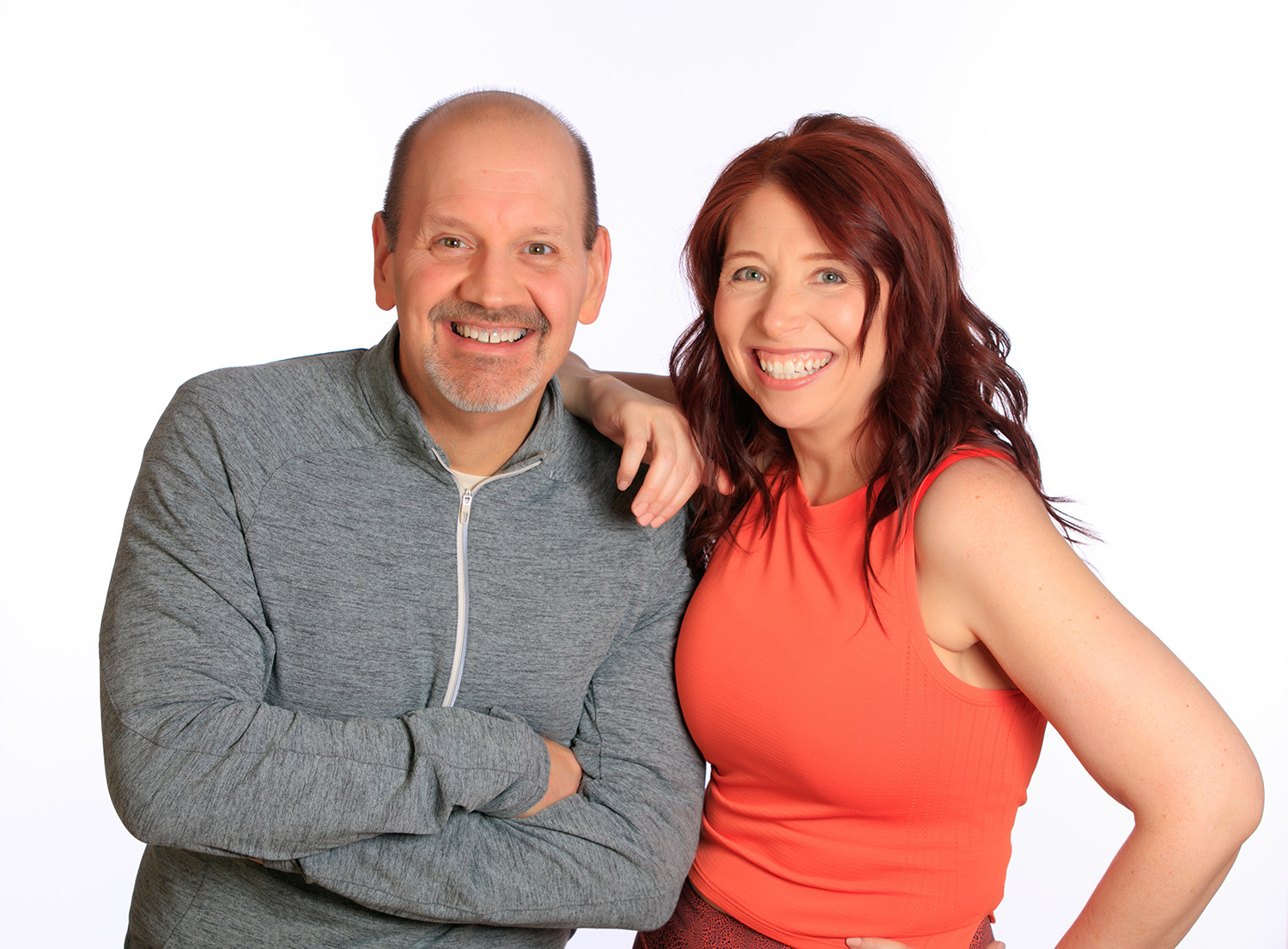
Subscribe
Keep up with all the Peloton news!
